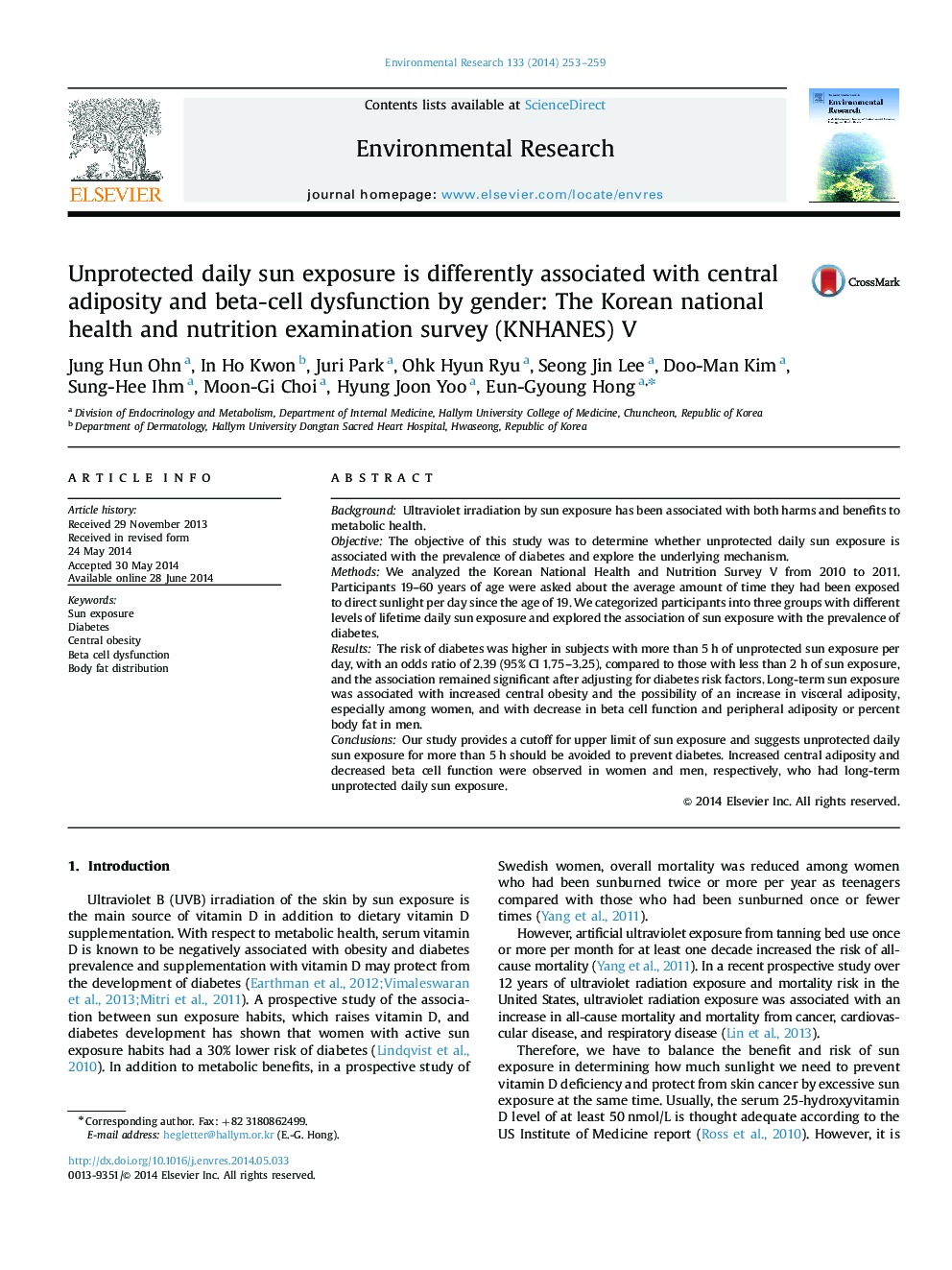| Article ID | Journal | Published Year | Pages | File Type |
|---|---|---|---|---|
| 4469733 | Environmental Research | 2014 | 7 Pages |
•Sun exposure for more than 5 h per day is associated with diabetes risk.•Insulin resistance associated with visceral adiposity may play a role in women.•Insulin secretory defect may explain diabetes risk in men.
BackgroundUltraviolet irradiation by sun exposure has been associated with both harms and benefits to metabolic health.ObjectiveThe objective of this study was to determine whether unprotected daily sun exposure is associated with the prevalence of diabetes and explore the underlying mechanism.MethodsWe analyzed the Korean National Health and Nutrition Survey V from 2010 to 2011. Participants 19–60 years of age were asked about the average amount of time they had been exposed to direct sunlight per day since the age of 19. We categorized participants into three groups with different levels of lifetime daily sun exposure and explored the association of sun exposure with the prevalence of diabetes.ResultsThe risk of diabetes was higher in subjects with more than 5 h of unprotected sun exposure per day, with an odds ratio of 2.39 (95% CI 1.75–3.25), compared to those with less than 2 h of sun exposure, and the association remained significant after adjusting for diabetes risk factors. Long-term sun exposure was associated with increased central obesity and the possibility of an increase in visceral adiposity, especially among women, and with decrease in beta cell function and peripheral adiposity or percent body fat in men.ConclusionsOur study provides a cutoff for upper limit of sun exposure and suggests unprotected daily sun exposure for more than 5 h should be avoided to prevent diabetes. Increased central adiposity and decreased beta cell function were observed in women and men, respectively, who had long-term unprotected daily sun exposure.
